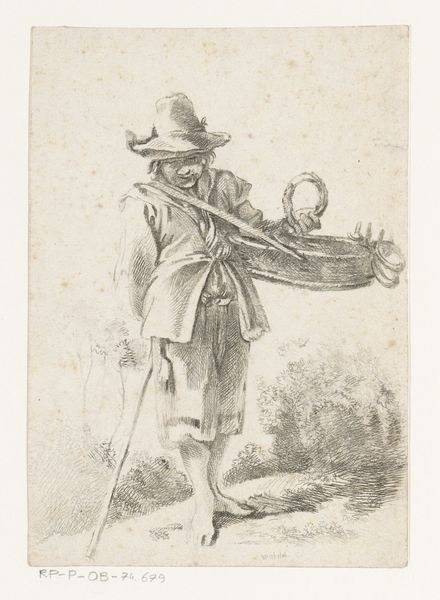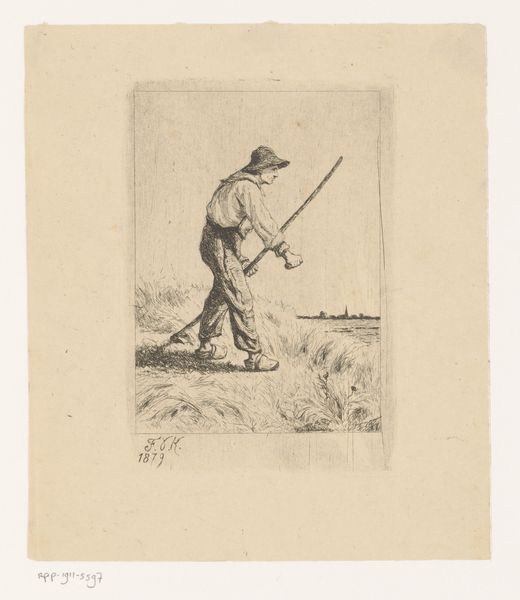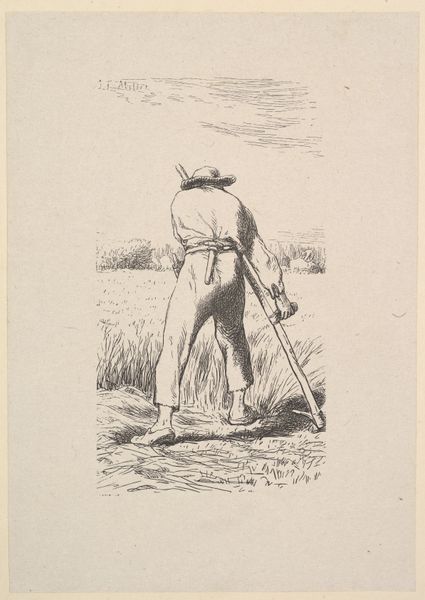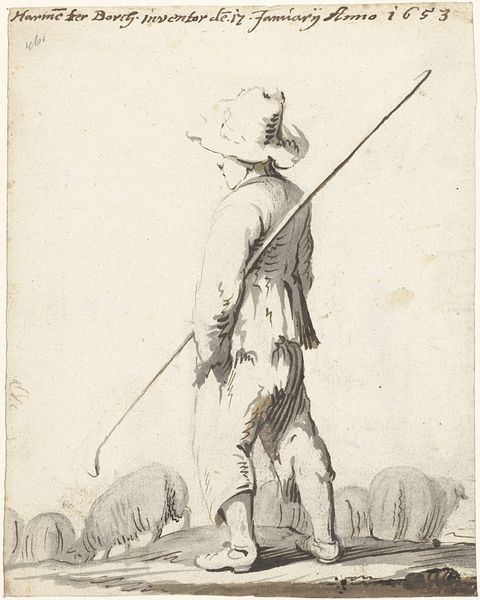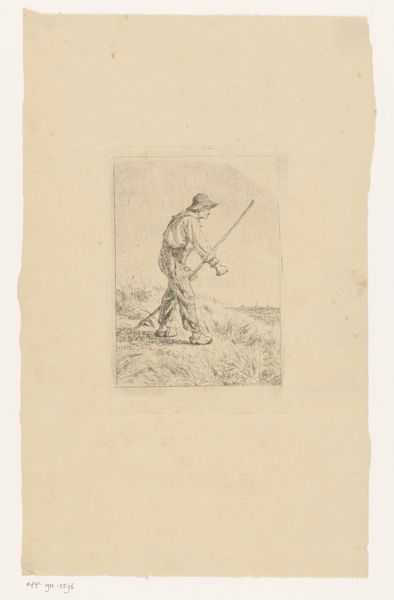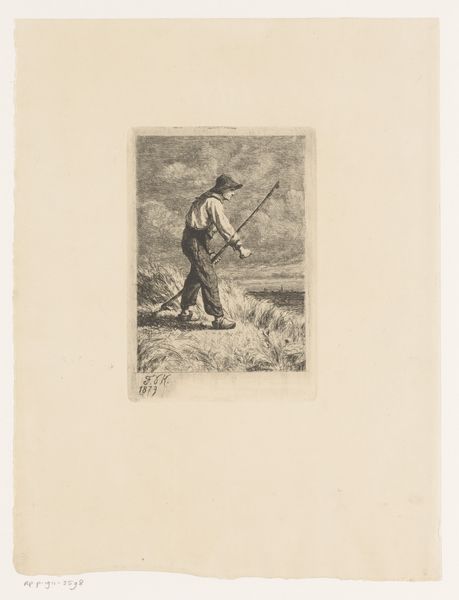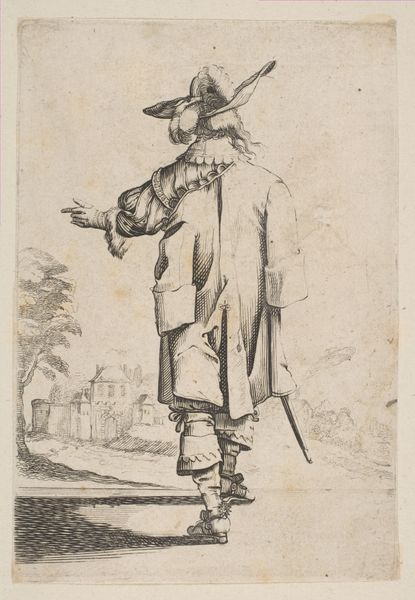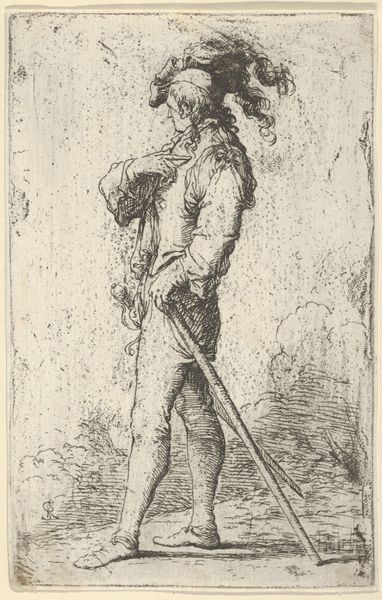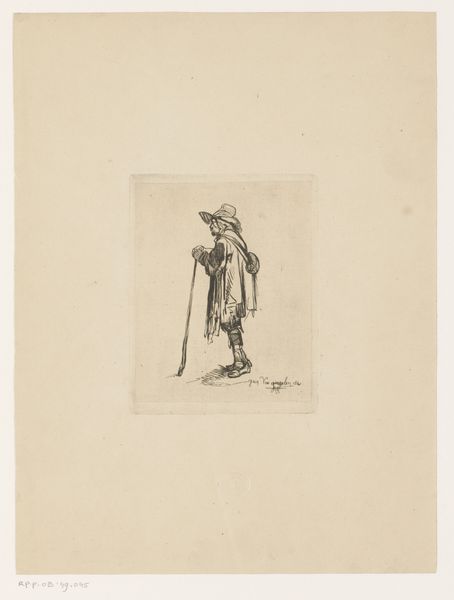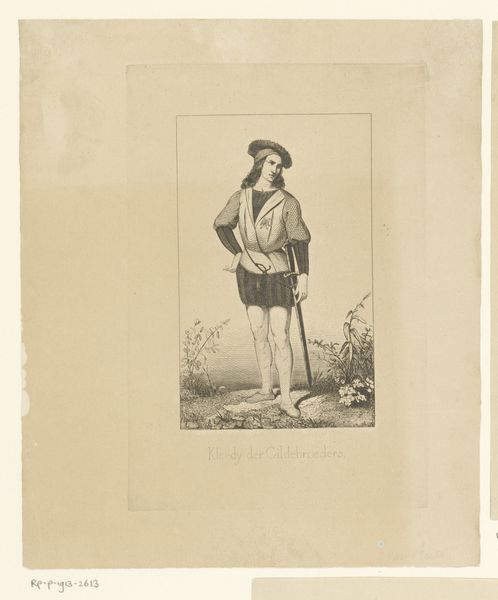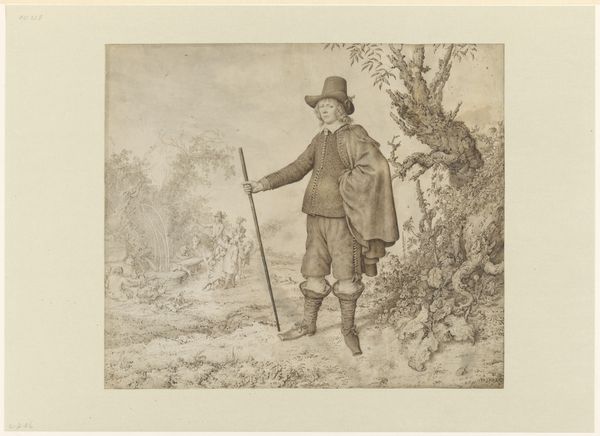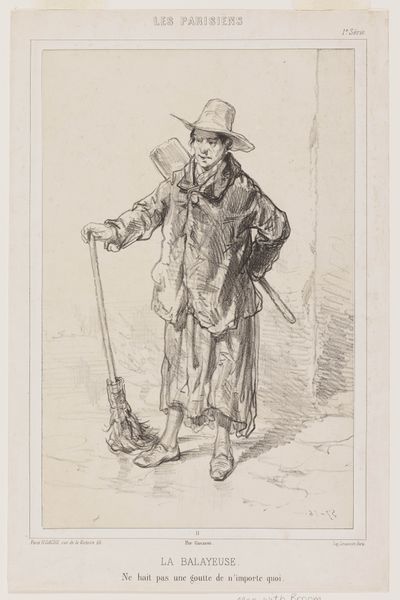
drawing, pencil
#
drawing
#
landscape
#
figuration
#
romanticism
#
pencil
Dimensions: height 270 mm, width 220 mm
Copyright: Rijks Museum: Open Domain
Editor: This drawing, “Arme man met wandelstok op de rug gezien” or "Poor man seen from the back with a walking stick," is by David Welle, created sometime between 1809 and 1848. It's a pencil drawing currently held at the Rijksmuseum. There's something very poignant about this lone figure; he looks so weathered and weary. What story do you think Welle is trying to tell us? Curator: The loneliness you feel emanating from this drawing is profound, isn't it? I think Welle captured the very soul of isolation and the harsh realities of life in that era. Notice the worn clothes, the simple walking stick...it whispers of hardship. But look closer—do you see the romanticism inherent in the landscape itself? Even in depicting poverty, there’s an undeniable appreciation for the natural world, an embrace of its quiet solitude. Almost like nature is the only comfort this man has. Editor: That’s interesting. So, the setting isn't just a backdrop; it’s integral to understanding the man’s situation. It is. Curator: Precisely. Consider this drawing within the broader context of Romanticism; there’s an intense focus on individual experience, heightened emotion, and a celebration of nature’s power. Perhaps Welle wasn’t just documenting poverty but also exploring the spiritual weight of existence through this man's journey. Maybe a bit of Welle’s soul is also on display here. Editor: So it's a man against nature kind of thing? Curator: To a degree. But also perhaps it's a "man finding himself in nature." What was lost and can be refound. I can’t help but think that this landscape provides more for our fellow than society seems willing to give. Editor: That gives me a lot to consider. It seems to reveal more depth with each look. Curator: Exactly! Art invites us into a dialogue—not just with the artwork but with ourselves.
Comments
No comments
Be the first to comment and join the conversation on the ultimate creative platform.
